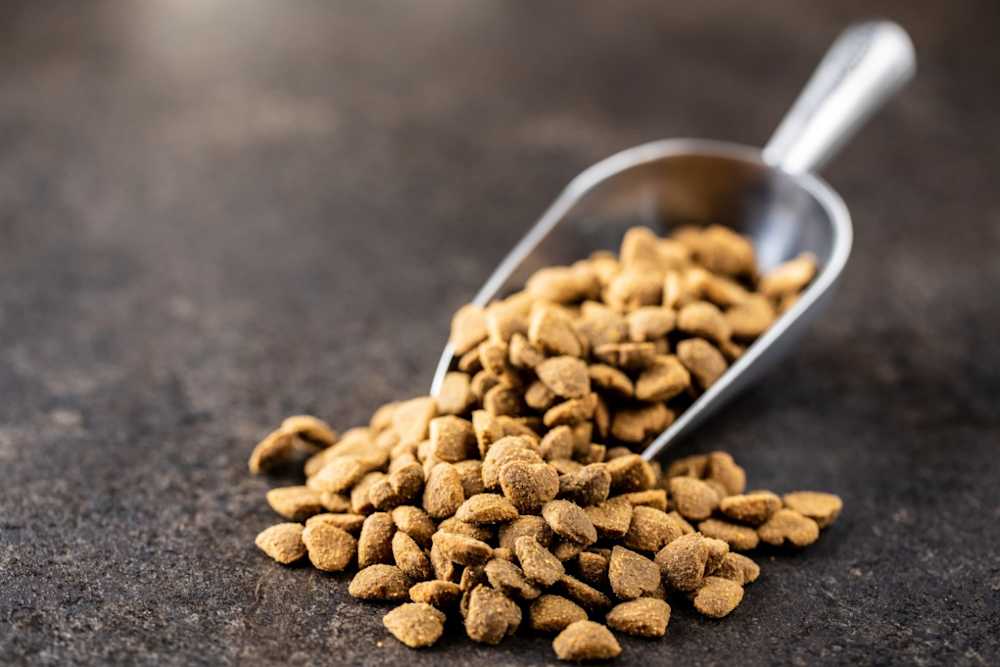Every year, Europeans need around 450 million tons of feed for farm animals and another 10 million tons for their pets.1 To ensure that feed does not endanger animal welfare or negatively affect the environment, the EU has set strict rules on labeling, authorized ingredients and additives, and maximum levels of contaminants.2 Third-party laboratory testing can help feed manufacturers and importers ensure their products meet all the relevant requirements.
What needs to be included on the label?
European feed labels must include a comprehensive set of information on the product, including the following:3
Type of feed (feed material, complete, complementary, or compound feed)
Net quantity (mass or volume)
List of additives
Moisture content
The species for which the feed is intended, if it is not suitable for all animal species
Minimum storage life (“use before” or “best before” date)
Composition information listing the ingredients in descending order by weight
List of analytical constituents
The specific analytical constituents that need to be listed depend on the feed type and the species it is intended for. For example, pet food for cats, dogs, and other furry animals must contain information on crude protein, crude fiber, crude fat, and crude ash.
EU rules on feed additives
Feed additives are substances or microorganisms intentionally added to feed, for example, to improve its characteristics, to satisfy the nutritional needs of animals, or to improve animal performance or welfare. Veterinary medicinal products, including most antibiotics, are not considered feed additives but are instead regulated separately.4
Only authorized feed additives may be sold on their own and as premixtures, or added to feed.5 Companies must also ensure that product labels list the used additives and relevant characteristics, such as the expiry date, concentration, or active substance level, depending on the type of additive.6
Rules on feed contaminants
EU legislation sets maximum tolerable levels for a range of undesirable substances in animal feed. These include heavy metals, nitrogenous compounds, mycotoxins, plant toxins, organochloride compounds, dioxins, and PCBs, such as:
Arsenic
Cadmium
Fluorine
Lead
Mercury
Nitrite
Melamine
Aflatoxin B1
Rye ergot (Claviceps purpurea)
Ragweed (Seeds from Ambrosia)
Free gossypol
Hydrocyanic acid
Theobromine
Volatile mustard oil
Aldrin
Dieldrin
Dioxins (sum of polychlorinated dibenzo-para-dioxins (PCDDs), polychlorinated dibenzofurans (PCDFs))
Polychlorinated biphenyls (PCBs)7
Manufacturers should monitor contaminant levels, as the discovery of undesirable substances in excessive amounts can lead to market withdrawals. Feed may also be recalled if it causes a microbiological hazard or is otherwise found to endanger animal health.
In 2023, some of the most common reasons for feed recalls in the EU included salmonella, aflatoxin B1, ragweed, and lead.8 A high-profile case of glycoalkaloids in pet food also generated significant media attention9, illustrating the importance of testing high-risk feed for likely contaminants even if maximum levels are not explicitly specified in EU regulations.
Feed testing by EU regulations
Measurlabs provides a comprehensive range of testing services for companies wishing to market feed in the European Union. Analysis options include nutritional analysis, fatty acid profile determination, and evaluation of various quality parameters, such as peroxide, p-Anisidine, and total oxidation values. Contaminant screening is available for a range of substances, including the following:
If you have any questions related to feed testing or would like to request a quote, don't hesitate to contact our experts using the form below or at info@measurlabs.com.
References
1 See the Animal feed landing page on the European Commission website.
2 Regulation (EC) No 767/2009 covers the placing on the market and use of feed, Regulation (EC) No 1831/2003 additives in animal nutrition, and Directive 2002/32/EC undesirable substances in animal feed.
3 Labeling provisions are outlined in Chapter 4 of Regulation (EC) No 767/2009.
4 The definition of feed additives can be found in Article 2 and Article 5 of Regulation (EC) No 1831/2003 on additives for use in animal nutrition. Veterinary medicinal products are covered by Regulation (EU) 2019/6.
5 European Commission’s Food and Feed Information Portal Database lists the authorization status of feed additives.
6 Chapter III of Regulation (EC) No 1831/2003 covers general labeling requirements for feed additives and premixtures, while Annex III outlines specific labeling requirements for certain additives.
7 The full list of maximum levels of undesirable substances can be found in Annex I of Directive 2002/32/EC.
8 In 2023, the European Commission’s RASFF Window recorded 54 serious incidents with feed. 16 related to salmonella, 15 to aflatoxin B1, 7 to ragweed, and 3 to lead.
9 YLE: Authority confirms toxic glycoalkaloids likely behind Musti ja Mirri’s pet food illnesses.

